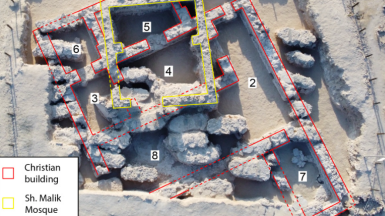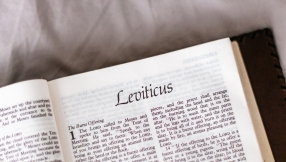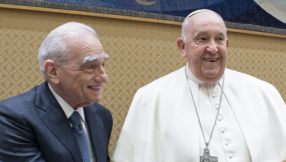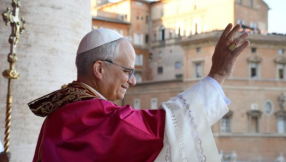
A newly discovered ancient structure sheds light on the historic roots of Christian communities in the Gulf region.
In a groundbreaking find, archaeologists in Bahrain have uncovered one of the oldest Christian buildings in the Gulf, dating back to the fourth century. This significant discovery provides the first physical evidence of an ancient Christian community in the island nation.
The Church of the East, also referred to as the Nestorian Church, thrived in the region for several centuries until the seventh century, when the spread of Islam began.
Teams from Bahrain and the United Kingdom unearthed an eight-room building believed to have served as the residence of the bishop of the diocese in Samaheej, a village on Muharraq Island's northern coast. This joint project, initiated by the Bahrain Authority for Culture and Antiquities under Dr Salman Al Mahari and led by Professor Timothy Insoll from the Institute of Arab and Islamic Studies at Exeter University, started in 2019 and led to careful excavations continuously through 2023.
Their work reveals the early Christian settlements in Bahrain, dating back many centuries before the spread of Islam. Radiocarbon dating confirms that the Samahij site was occupied from the mid-fourth to mid-eighth centuries CE, likely abandoned as Islam spread further among the local population.
The excavation began at a mound within the Samahij cemetery, where archaeologists found remnants of a 300-year-old mosque hidden beneath the ground. Digging deeper still, they uncovered a large building with eight rooms, including a kitchen, dining room, workshop, and three living quarters.
A statement from a Bahraini government media team explained, "The findings suggest the building may have been the residence of the bishop of the diocese, which included Samahij."
The statement added, "Records also indicate a connection between the region and central church authorities, with one bishop dismissed in 410 CE and another condemned for challenging church unity in the mid-seventh century."
This discovery is unique due to its location in a modern, densely populated town, unlike previous Christian structures found in remote areas along the Gulf coast.
Important finds during the excavation included three plaster crosses, two on the building's exterior and one possibly kept as a personal memento, along with wall carvings featuring a fish symbol and part of the 'Chi Rho' etching, representing the word of Christ.
Dr Al Mahari mentioned that the excavation is nearing completion and emphasised the site's importance for Bahraini history, offering valuable insights into the Christian presence in the region.
Details about the building and its inhabitants' lives were also uncovered. Built with stone walls coated in plaster and plaster floors, the structure had sockets and holes indicating door and seat placements. The kitchen had built-in ovens with bases and storage areas. Artifacts suggest the residents enjoyed a good standard of living, consuming meat, fish, shellfish, and various crops.
The discovery of semi-precious agate beads and broken Indian pottery indicates trade, particularly with India. Small drinking glasses and twelve copper coins suggest the use of Sassanian Empire currency. Additionally, spindle whorls and copper needles hint at possible cloth production for religious purposes.
"We stress the importance of this site and the need to preserve it, highlighting its historical and archaeological value," said Professor Insoll.
"We were amused to find someone had drawn part of a face on a pearl shell using bitumen, possibly for a child who lived in the building," enthused the professor. "This is the first physical evidence of the Nestorian Church in Bahrain, providing a fascinating insight into how people lived, worked, and worshipped."
This find not only enriches our understanding of the region's diverse religious history but also highlights the rich culture that existed in Bahrain long before the advent of Islam.













